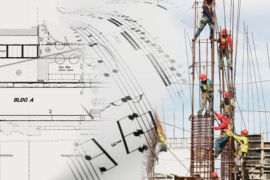No doubt, you have heard the old adage “time is money.” Turns out, Benjamin Franklin coined the phrase in 1748. I used to think this was always true for everyone, but then I started raising a toddler—that kid has nothing but time and no opportunity cost associated with how he uses it, but he has yet to bring home a paycheck. In fact, he regularly costs me money! Joking aside, as an adult, this association between time and money is mostly true and certainly rings true in the real estate development and construction world, where success is universally defined as bringing in a project on time and under budget. It may come as no surprise that these two have a direct correlation; if a schedule increases, so will the budget. Sticking to a schedule can be one of the most challenging but important parts of the project. Here are some lessons learned over the years as they relate to schedule, and not just in real estate development.
Be Realistic, but Aggressive
Tasks will always expand to fill the time they are given; it seems that is just the nature of the universe. So, how do you create a healthy balance between a realistic schedule containing appropriate timelines, and pushing a schedule to avoid unnecessary excess time? Schedules usually involve a host of internal and external participants, and it comes down to getting a buy-in from all parties involved. Commit with colleagues to fulfill tasks that you have control over, and then don’t be afraid to follow up with external team members regarding timelines they have committed to. Once a schedule is established with timelines, I have found that it is usually a good idea to try and anticipate road bumps by adding a fixed buffer to each task. It is better to under-commit and over-accomplish than it is to constantly be coming up with excuses as to why things are not getting done as they were previously communicated. Some tasks will need various amounts of extra time, others won’t require any at all, but budgets carry contingency for unforeseen issues, and schedules should be no different.
Begin with the End in Mind
What does the finish line look like? A development project comes with varying levels of urgency at the end. We may just be trying to hit the good leasing season in early summer of a multifamily project. Maybe we’d like to aim to get a Phoenix-area hotel open for spring training. Perhaps we are building a student housing complex that must, at all costs, be open in time for the semester to start. Each of the previous scenarios has an increasing level of consequence for schedule slip. The harder the backstop, the earlier the ball needs to start rolling on the front end to accomplish the desired result. Failure to do so will mean increased costs to accelerate an otherwise realistic schedule. Upfront attention to detail will always make the overall process smoother and will pay dividends on the back end.
Don’t Wait to Track Progress
If you made a goal to lose 20 pounds in six months but then only stepped on the scale on day one, on day 180 of your diet and exercise regime there is a high likelihood you won’t have hit your goal. Likewise, getting to the end of a project only to realize you are behind schedule means it’s far too late. Schedules should be broken down into smaller milestone dates that can be regularly compared to actual progress. Start early and analyze the progress of the project. If actual progress is behind scheduled progress, corrective action needs to be taken. This should be clearly communicated to all parties. The earlier this is addressed, the higher chance there is of being able to get back on track.
















